Official online field log for the Curious Corvid Creature Compendium.
Don't wanna be here? Send us removal request.
Text
I love you jargon I love you taxonomy I love you little magic words made for a special purpose that only a niche group of people know or care about
0 notes
Note
These are the most common colloquial terms; researchers use slightly different terminology to describe the regions of a slime’s plasmodial body. The outer layer is indeed called the membrane, and is made of semipermeable phospholipids capable of absorbing water and nutrients, as well as keratin, elastin, and collagen, which retain moisture, help keep the slime’s shape, and protect the cytoplasm.
The “gel” and “core” are both parts of the cytoplasm, in a structure called a syncytium (/sɪnˈsɪʃiəm/; pl.: syncytia; from Greek: σύν syn "together" and κύτος kytos "box, i.e. cell") or symplasm, which is a multinucleate cell without cytoplasmic division. Corporeal slimes have open circulatory systems and may contain billions of nuclei, all collecting and sharing sensory information. The nuclei are most dense towards the center mass, which makes the region the most sensitive. There is no distinct boundary between the gel and core regions, but in most slimes the nucleate density increases exponential at an internal depth of 5-10 inches.
What parts of your body are most sensitive touch? Do slimes even have parts, or is it like all the same goo in there?
Slimes have three notable layers (but sometimes can be condensed down to two or even one!) they are the Core, the Gel, and the Membrane.
The core is the most sensitive part and is very much the target of any sort of *affection* one might give. However, usually takes a bit for a slime to open itself up like that.
The Gel is the second most, like skin but 50x more sensitive. Most of gel is dedicated to sensory perception and that means touching!
The Membrane is the least sensitive. The outermost gel that hold all the slime and prevents anything going in or out that the slime wouldn’t want. This is the equivalent of human skin (an outer thigh) in terms of sensitivity.
#slime#slime kin#bestiary#creature compendium#creature#slimekin#reliableslimegal#slime girl#otherkin#goo girl#slime anatomy#slime biology#biology#anatomy
46 notes
·
View notes
Text
Now this is what a true researcher looks like.
About 10 years ago I was working for a gaming company doing creature design. After work, I would go home and dissect animals in my garage. I borrowed a tiger carcass from a local taxidermist. I wanted to understand how the jaw muscles worked, so I stop motion animated it.

The muscle on the back of the head (Temporalis) bulges out when the jaw is closed. But when the is jaw is open, it depresses in like the surface of a trampoline. But not uniformly, in a Y shaped pattern.

I ended up getting evicted for stop motion animating tiger parts in my garage…..but it was worth it. I still have hard drives full of animal carcasses reference animations today. Fun Times.
10K notes
·
View notes
Text
Confirmed regarding red slimes
Holy shit, had an amazing night with a friend that turned into a date.
I might be gay.
Like actually gay.
Super seriously gay.
87 notes
·
View notes
Text

The girtablullû, aqrabuamelu, false-headed scorpion or scorpion people are ancient creatures, featured in the art and literature of ancient Mesopotamia and Iran dating back thousands of years. Early descriptions are sensationalized and anatomically unreliable, describing the girtablullû to have the upper body of a man and lower body and tail of a scorpion. The girtablullû is, morphologically, far more similar to other scorpions than this description would suggest. However, in addition to its enormous size, it has an elongated body and specialized pedipalps, giving it a tentative resemblance to a humanoid upper body. Most prominent, however, is the creature’s false head, which is similarly-shaped to a human’s.
Though the false head is hollow, girtablullû are highly intelligent and industrious, in some cases more so than mermin. They use their claws to dig and even work bronze and steel in rudimentary forges. It is difficult to accurately evaluate the extent of their intelligence, as their technological advancement is hindered by their limited dexterity, and they primarily communicate with each other through pheromones and vibrations. Though they are more defensive then aggressive towards humans, they do not seem interested in diplomatic pursuits—unsurprising, given their solitary nature even towards each other.
#bestiary#creature compendium#creature#cryptozoology#mythical creatures#cryptid#creature design#cryptozoolologist#fantasy#cryptonaturalist#girtablullû#aqrabuamelu#scorpion#mythology#Akkadian#mesopotamia
3 notes
·
View notes
Text
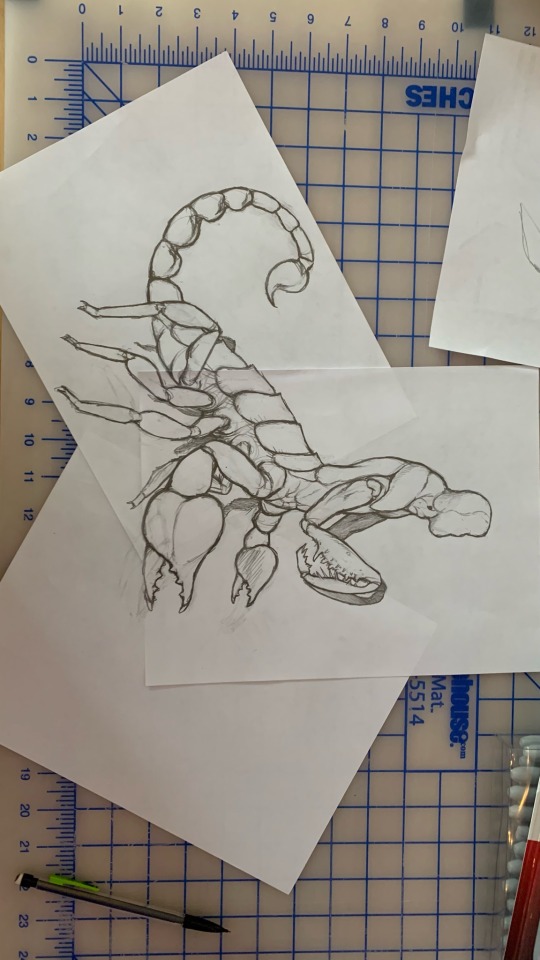
Coming soon: the Mesopotamian “𒄈𒋰𒇽𒍇𒇻,” romanized girtablullû, also known as the Aqrabuamelu, false-headed scorpion, or scorpion man, originally described in the Epic of Gilgamesh.
#bestiary#creature compendium#creature#cryptozoology#mythical creatures#cryptid#creature design#cryptozoolologist#fantasy#cryptonaturalist#Aqrabuamelu#girtablullû#Akkadian#Mesopotamian
4 notes
·
View notes
Text

Kraken are….big.
#bestiary#creature#creature compendium#mythical creatures#cryptid#cryptozoology#creature design#cryptozoolologist#fantasy#cryptonaturalist#kraken#Nordic kraken#benthic#akkorokamui#Ainu#size comparison#saratan#squid#octopus
5 notes
·
View notes
Text

October 2025
4 notes
·
View notes
Text
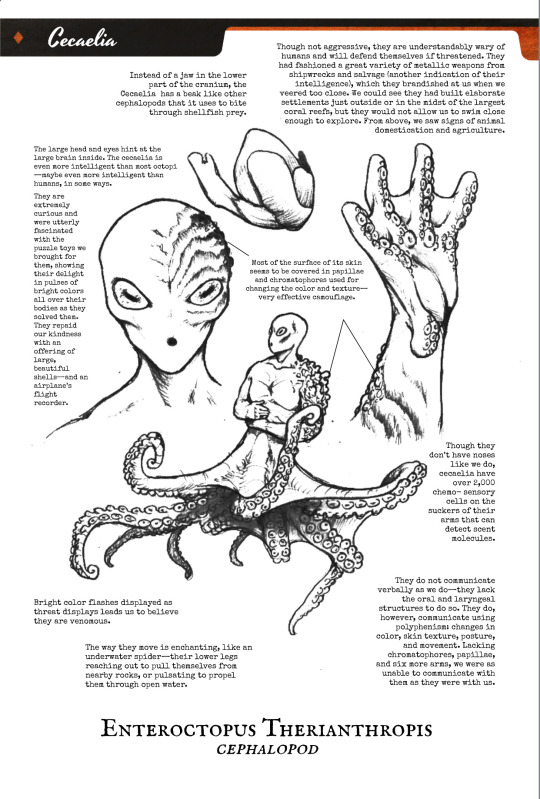
Most artistic renditions of cecaelia portray them with a greater resemblance to humans to make them more palatable; in reality they appear quite alien.
#bestiary#creature#creature compendium#mythical creatures#cryptid#cryptozoology#creature design#cryptozoolologist#cryptonaturalist#fantasy#cecaelia#alien#cephalopod#octopus
17 notes
·
View notes
Text
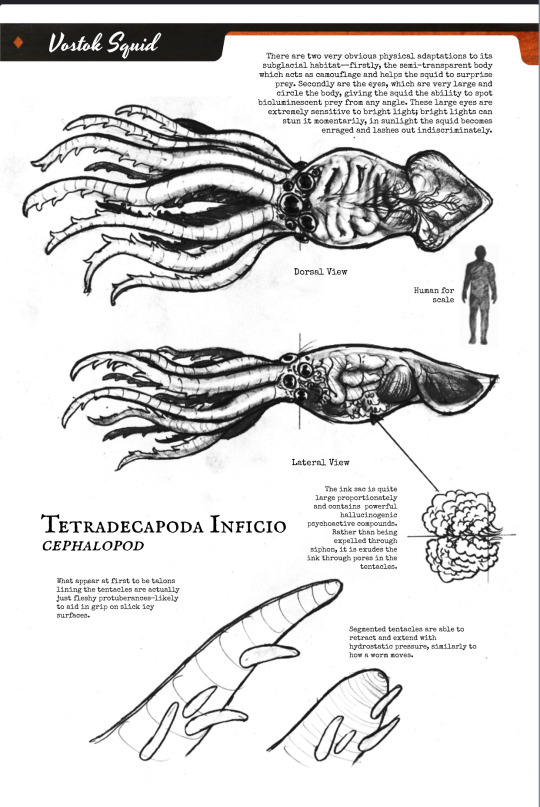
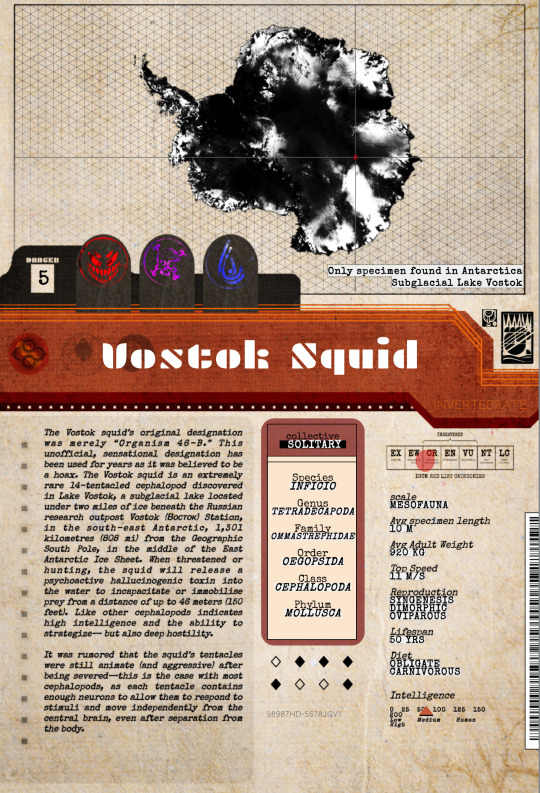
The Vostok squid's original designation was merely "Organism 46-B." This unofficial, sensational designation has been used for years as it was believed to be a hoax. The Vostok squid is an extremely rare 14-tentacled cephalopod discovered in Lake Vostok, a subglacial lake located under two miles of ice beneath the Russian research outpost Vostok (Восток) Station, in the southeast Antarctic, 1,301 kilometres (808 mi) from the Geographic South Pole, in the middle of the East Antarctic Ice Sheet. When threatened or hunting, the squid will release a psychoactive hallucinogenic toxin into the water to incapacitate or immobilise prey from a distance of up to 46 meters (150 feet). Like other cephalopods indicates high intelligence and the ability to strategize— but also deep hostility.
It was rumored that the squid's tentacles were still animate (and aggressive) after being severed-this is the case with most cephalopods, as each tentacle contains enough neurons to allow them to respond to stimuli and move independently from the central brain, even after separation from the body.
#bestiary#creature#creature compendium#mythical creatures#cryptid#cryptozoology#creature design#cryptozoolologist#fantasy#cryptonaturalist#vostok#lake Vostok#antarctica#subglacial#squid#poisonous#organism
1 note
·
View note
Text
A lot of people consider cecaelia to be a type of mermin; this is a misconception as the various types of mermin are all ichthyoid. Cecaelia, rather, are therianthropes, which is a broad (and some would argue egocentric) term for animals which have prevalent characteristics that resemble a human’s, such as humanoid body shape (upper or lower), a “flat face,” and hands with opposable thumbs.
#bestiary#creature#creature compendium#mythical creatures#cryptid#cryptozoology#creature design#cryptozoolologist#fantasy#cryptonaturalist#Cecaelia#therianthrope#therianthropy#mermin#mermaid#ichthyoid
4 notes
·
View notes
Text
Cecaelia are some of the most intelligent animals on earth, comparable with early humans, and their technology currently resembles that of a late Stone Age or early Bronze Age, with two major differences: they have no need for the wheel, as their transportation is buoyant, and living underwater they cannot use fire—which of course excludes almost all metalworking technology as we know it.
Can you even imagine? How different would we be, had we evolved in a world that prevented us from discovering fire? Without one of the first things people point to that separates us from humans and animals? What if it were just out of reach, beyond a ceiling and an empty world we barely understood. What if we never developed the wheel because we didn’t need it, because we were free to explore the world soar into the sky without the air of a craft. Would our technology have developed in other ways, or would we to this day be stuck in agrarian societies? Would we be worse or better? Would we be happier? Would we be free?
#bestiary#creature#creature compendium#mythical creatures#cryptid#cryptozoology#creature design#cryptozoolologist#fantasy#cryptonaturalist#cecaelia#intelligence#technology#Stone Age#Bronze Age#fire#wheel#metalworking
1 note
·
View note
Text
Tumblr dot com is a great place for us. Plenty of freaky little creatures to document
#bestiary#creature#creature compendium#cryptid#mythical creatures#cryptozoology#creature design#cryptozoolologist#cryptonaturalist
2 notes
·
View notes
Text
From your illustration, it looks like you have a member of the Nixie family—possibly a close relative of the Bäckahästen or Rusalka. They’re typically considered water spirits. Watch out, as they have a tendency to play a little rough and may accidentally drown you since they may not understand that you need air to breathe, but the widespread notion that they are malicious is a misconception. They can get protective when nesting, but if she let you draw her it’s probably alright to approach her and feed her small fish as a treat. Just make sure to stay safely on solid ground!
I've tried getting a photo of my cryptid, but for some reason every time I try to my cameras lens cracks and the battery dies. Instead, here some sketches to try and capture her stunning good looks!

She's probably right about 6 feet or two meters tall standing in her little back legs, but she's much more comfortable on all fours!
If anyone seen a creature like this before please let me know, and if yoy have any questions for either of us feel free to ask! -Ty
#a real cryptid#cryptid speaks#cryptid#monster#rusalka#nixie#backahasten#Bäckahästen#bestiary#creature#creature compendium
10 notes
·
View notes
Text
All these people claiming Persephone coral causes eldritch madness are wimps. Listen, if staring at bioluminescent sea creatures gives you “existential dread” then maybe you’re just not cut out to be an abyssopelagic marine biologist
#bestiary#creature#creature compendium#mythical creatures#cryptozoology#creature design#cryptid#cryptozoolologist#fantasy#cryptonaturalist#coral#Persephone#bioluminescence#existential dread#eldritch
5 notes
·
View notes
Text
The problem fundamentally with Nordic kraken is that at the end of the day they’re octopus which are notoriously 1. Curious and 2. Spiteful. Everyone makes them out to be these vicious vengeful sea monsters. But if you sail your little boat within reach of a toddler the size of a house with tentacles can you expect it not to climb this magnificent new jungle gym?
#bestiary#creature#creature compendium#mythical creatures#cryptozoology#creature design#cryptid#cryptozoolologist#fantasy#cryptonaturalist#curiouscorvidcreaturecompendium#kraken#nordic
6 notes
·
View notes
Text
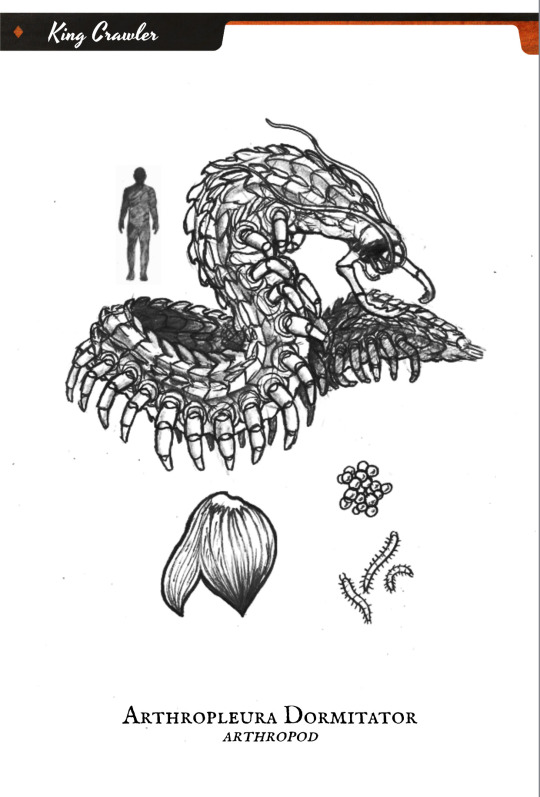
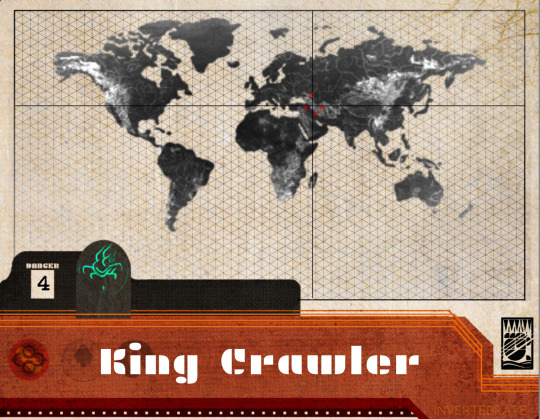
In honor of @mandrakebrew who likes centipedes, we present our research in progress on Arthropleura dormitator, colloquially known as the Kind Crawler. A. dormitator is the only extant member of rhe arthropleura genus of gigantic prehistoric myriapods. They are endemic to deep old growth forests in Appalachian North America and Central Europe.
#centipede#bestiary#creature#creature compendium#mythical creatures#cryptozoology#creature design#cryptid#cryptozoolologist#fantasy#cryptonaturalist#curiouscorvid#curiouscorvidcreaturecompendium
3 notes
·
View notes